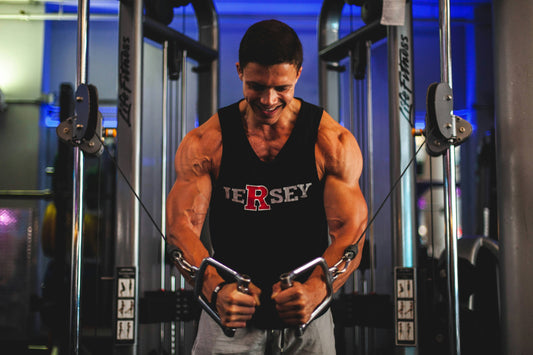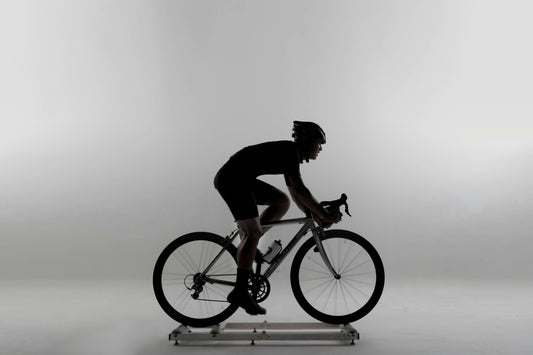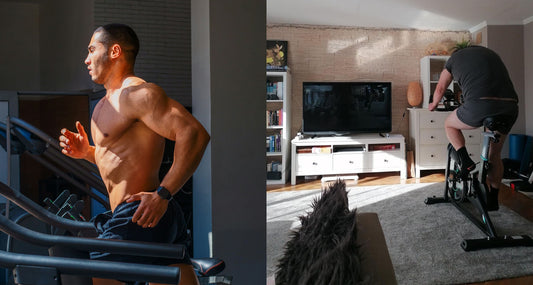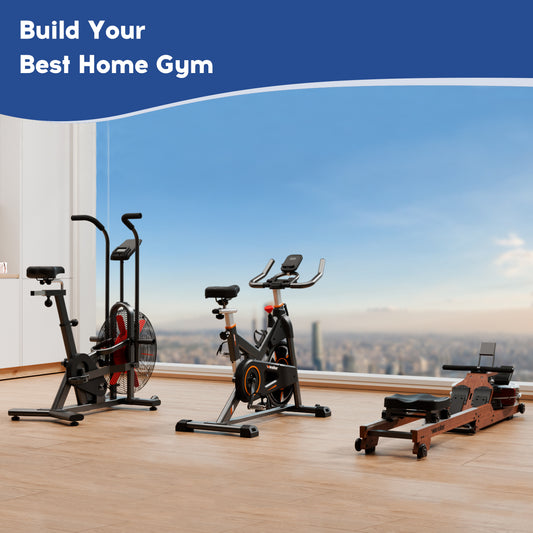ndoor cycling is more than a low-impact cardio staple—it’s a powerful tool for weight management and overall fitness. But how many calories does an exercise bike actually burn? The answer isn’t just a number; it’s a dynamic equation shaped by your body, effort, and equipment.
At Wenoker, we believe in combining data with real-world expertise. In this guide, we’ll explore the science of calorie expenditure on exercise bikes, introduce practical strategies to amplify your results, and share insights from our veteran fitness coach, Mark Richardson, with over 15 years of experience in performance conditioning.
1. Understanding Calorie Burn: It’s Not One-Size-Fits-All
Calorie burn on a stationary bike is primarily influenced by body weight, workout intensity, duration, and bike type. Formulas like the MET (Metabolic Equivalent of Task) equation offer a scientific estimate:
Calories burned (kcal) = MET × 3.5 × body weight (kg) ÷ 200 × duration (minutes).
For example, a 70kg person cycling at moderate intensity (8 METs) for 30 minutes burns approximately 294 kcal. However, individual factors like metabolism, muscle mass, and fitness level fine-tune this number.
Calorie Estimates Based on Time (for a 70kg Individual)
| Workout Duration | Average Calories Burned (Moderate Intensity) |
|---|---|
| 15 minutes | ~115 kcal |
| 30 minutes | ~280 kcal |
| 45 minutes | ~400 kcal |
| 60 minutes | ~600 kcal |
Source: Adapted from Harvard University metabolic studies.

2. Key Factors That Influence Calorie Burn
Weight and Gender
Heavier individuals burn more calories because moving mass requires more energy. Men also typically burn more due to higher muscle mass, elevating basal metabolic rate.
Workout Intensity: The Game-Changer
Intensity is the most adjustable variable for calorie output. Here’s a breakdown for a 70kg rider:
- Light intensity (12-15 km/h): Leisurely pace → ~7.4 kcal/min.
- Moderate intensity (15-23 km/h): Fat-burning zone → ~9.1 kcal/min.
- Vigorous intensity (23-30+ km/h): Max calorie burn & metabolic spike → ≥11.2 kcal/min.
Coach Mark’s Tip: “Don’t just pedal faster—increase resistance. Riding at a challenging resistance simulates hill climbs and recruits more muscle fibers, leading to higher energy expenditure than fast, low-resistance spinning.”
Heart Rate Zones: Know Your Targets
Training in specific heart rate zones aligns with distinct fitness goals:
- Fat-burning zone: 60–70% of max heart rate (MHR). A higher percentage of calories burned come from fat.
- Cardio zone: 70–85% of MHR. Burns more total calories per minute.
Calculate your MHR ≈ 220 – your age.
3. Calories Burned by Exercise Bike Type
Different bikes engage muscles uniquely, influencing calorie burn:
| Bike Type | Calories Burned (30 mins, 70kg) | Ideal For |
|---|---|---|
| Recumbent Bike | 150–250 kcal | Beginners, rehabilitation, low-impact sessions |
| Upright Bike | 260–390 kcal | General cardio, weight loss, home workouts |
| Spin Bike | 350–500+ kcal | Your text go here 2 |
For those seeking a seamless home-cycling experience, the Wenoker JC318 Smart Exercise Bike features electromagnetic resistance, IoT connectivity, and real-time performance metrics—ideal for structured interval training and virtual rides.
4. How to Maximize Calorie Burn: Actionable Strategies
Incorporate HIIT (High-Intensity Interval Training)
HIIT can increase calorie burn by up to 30% compared to steady-state cardio and triggers EPOC (Excess Post-Exercise Oxygen Consumption), keeping your metabolism elevated for hours post-workout.
Sample HIIT routine:
- 5-minute warm-up (light pedaling).
- 30–60 seconds sprint (high resistance + speed).
- 60–90 seconds active recovery (slow, light resistance).
- Repeat 8–10 cycles.
- 5-minute cool-down.

Increase Resistance, Not Just Speed
“Raising resistance builds muscular endurance and cranks up calorie burn,” notes Coach Mark. “Think hill climbs, not flat roads.” The Wenoker JC317 Magnetic Resistance Bike enables micro-adjustments for precision intensity control.
Blend Cycling with Strength Training
Supplement cycling with 2–3 weekly full-body strength sessions. Compound movements like squats, lunges, and presses boost lean muscle mass, elevating your resting metabolism.
Leverage Virtual Cycling and Structured Programs
Apps like Zwift and Kinomap provide guided workouts, competitive engagement, and varied intervals—preventing adaptation and plateau. The Wenoker JC318 syncs with these platforms for immersive training.
5. Expert Insights: Q&A with Wenoker Coach Mark Richardson
Q: Can cycling specifically reduce belly fat?
Mark: “Spot reduction is a myth. Cycling creates a calorie deficit, contributing to overall fat loss—including the abdomen. Pair regular rides with balanced nutrition for visible results.”
Q: What’s the biggest mistake you see in indoor cycling?
Mark: “Neglecting resistance. Low resistance/spinning fast feels strenuous but under-utilizes muscles. Progressive overload—adding resistance over time—is key for body composition changes.”
Q: How do you maintain motivation?
Mark: “Set micro-goals: beat your last distance, try a new HIIT format, or join a virtual challenge. The Wenoker app’s community features help with accountability.”
6. Conclusion: Transform Your Ride, Transform Your Results
So, how many calories does an exercise bike burn? It hinges on you—your choices, consistency, and commitment. By applying the science of intensity, bike type, and interval training, you can turn each session into a powerful fat-loss driver.
At Wenoker, we engineer bikes like the JC317 and JC318 to support these goals—with responsive resistance, interactive features, and ergonomic designs. Remember, the best workout is the one you stick with. Stay consistent, stay curious, and let every pedal stroke count.








